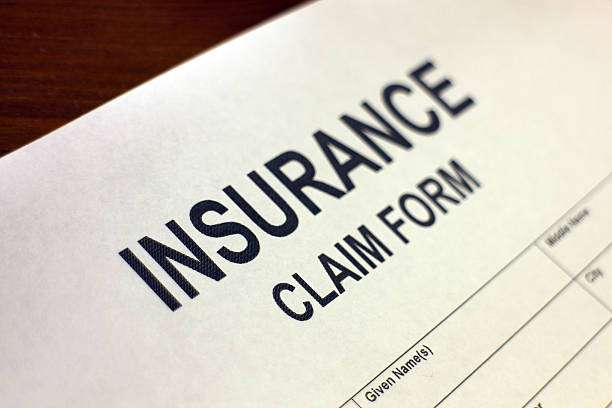
Getting into a car accident or experiencing vehicle damage can be stressful, but knowing how to file an insurance claim can help you navigate the process with ease. Whether you’re dealing with a minor fender-bender or a major collision, this step-by-step guide will walk you through the process, explain the required documents, and share tips to avoid common pitfalls.
1. Assess the Situation and Ensure Safety
Before filing a claim, prioritize safety for yourself and others involved.
Steps to Follow:
- Check for Injuries: Call 911 if anyone is injured and requires medical attention.
- Move to a Safe Location: If possible, move your vehicle to the side of the road to prevent further accidents.
- Turn on Hazard Lights: This alerts other drivers to proceed cautiously around the accident scene.
Pro Tip: Never leave the scene of an accident, as this could result in legal consequences.
2. Gather Necessary Information
Collecting accurate details at the scene is crucial for a smooth claims process.
What to Document:
- Contact Information: Names, phone numbers, and addresses of all parties involved.
- Insurance Details: Policy numbers and the names of the insurance companies for all drivers.
- Vehicle Information: License plate numbers, make, model, and color of the vehicles.
- Accident Details: Time, location, and a brief description of what happened.
Pro Tip: Take clear photos of the vehicles, damage, license plates, and any relevant road signs or conditions.
3. Notify Your Insurance Company
Promptly reporting the incident to your insurance company is essential for timely claim processing.
How to Notify:
- Call your insurer’s claims hotline (the number is usually on your insurance card).
- Use the insurer’s mobile app or online portal if available.
- Provide preliminary information about the accident.
Timeframe:
Most insurance companies require you to report an accident within 24–48 hours.
4. File the Insurance Claim
Once you’ve notified your insurer, you’ll need to officially file the claim.
Steps to File:
- Provide the Required Documents:
- Driver’s license.
- Insurance policy number.
- Accident report or police report (if applicable).
- Photos of the damage and accident scene.
- Describe the Incident: Be as detailed as possible when explaining the events leading up to the accident.
- Choose a Repair Shop: Some insurers have preferred networks, while others allow you to choose your own repair shop.
- Submit Your Claim: Confirm all details are accurate before submission.
5. Cooperate with the Claims Adjuster
After filing, an insurance claims adjuster will be assigned to your case to assess the damage and determine liability.
What to Expect:
- The adjuster may inspect your vehicle in person or request photos.
- You might be asked to provide additional documentation or statements.
Pro Tip: Be honest and cooperative throughout the process. Providing false information can result in claim denial.
6. Receive the Settlement and Complete Repairs
Once your claim is approved, you’ll receive a settlement to cover the damages.
Steps to Finalize:
- Review the Settlement Offer: Ensure it aligns with the repair estimates.
- Repair Your Vehicle: Use the settlement to cover repair costs. If you’re using an insurer-approved shop, the payment may go directly to the repair facility.
- Pay Your Deductible: If applicable, settle your deductible before repairs begin.
7. Required Documents for Filing a Claim
Having the right documents ready speeds up the claims process.
Checklist:
- Insurance policy information.
- Driver’s license and vehicle registration.
- Police report (if applicable).
- Photos of the accident scene and damage.
- Contact details of other parties involved.
Pro Tip: Keep a copy of your insurance policy and contact information in your glove compartment for quick access.
8. Tips for Faster Claim Approval
Speed up the process and avoid unnecessary delays with these tips:
- Report the Accident Immediately: The sooner you notify your insurer, the quicker they can start processing your claim.
- Provide Detailed Information: Include all relevant facts and supporting documents.
- Follow Up Regularly: Check in with your insurer to stay updated on your claim status.
- Use Digital Tools: Many insurers offer mobile apps for quicker submissions and updates.
9. Common Mistakes to Avoid
Avoid these errors to ensure your claim isn’t delayed or denied:
1. Delaying the Report:
- Waiting too long to file can result in claim denial.
2. Admitting Fault:
- Stick to the facts and avoid admitting blame, even if you think you’re at fault.
3. Providing Incomplete Information:
- Missing details or documents can stall the process.
4. Ignoring Policy Terms:
- Review your policy to understand what’s covered and any exclusions.
5. Skipping the Police Report:
- In some states, failing to file a police report for accidents over a certain amount can complicate your claim.
10. What to Do if Your Claim Is Denied
If your claim is denied, don’t panic—there are steps you can take to appeal the decision.
Steps to Take:
- Understand the Denial: Request a detailed explanation from your insurer.
- Provide Additional Evidence: Submit any missing documents or new information.
- Appeal the Decision: Follow your insurer’s formal appeal process.
- Seek Legal Advice: If necessary, consult an attorney or your state’s insurance regulator.
Read More…
Conclusion
Filing a car insurance claim doesn’t have to be a daunting process. By following these steps, gathering the required documents, and avoiding common mistakes, you can streamline the experience and receive the settlement you deserve. With a little preparation and prompt action, you’ll be back on the road in no time.
FAQs
1. How long does it take to process a car insurance claim?
It depends on the complexity of the case. Simple claims may take a few days, while complex ones could take weeks.
2. Do I need a police report to file a claim?
Not always, but having a report can strengthen your case, especially in accidents involving other drivers.
3. Will filing a claim increase my premiums?
In many cases, yes, especially if you’re at fault. However, some insurers offer accident forgiveness.
4. Can I file a claim if the accident wasn’t my fault?
Yes, but your insurer may work with the at-fault driver’s insurance to recover costs.
5. What if the other driver is uninsured?
If you have uninsured motorist coverage, your policy will cover the damages.
